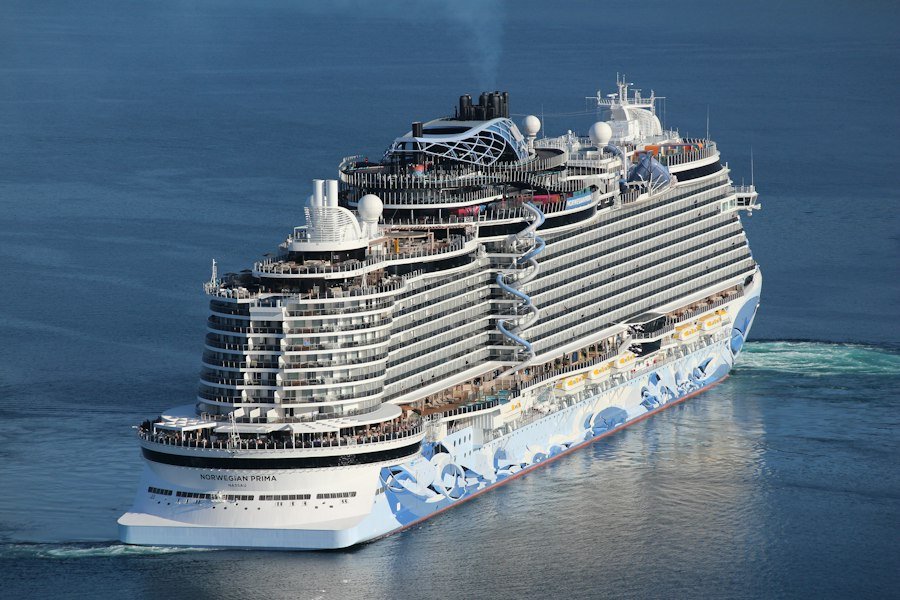

Norwegian Vocabulary for Social Justice and Human Rights Discussions
Language plays a crucial role in social justice and human rights discussions. It is through language that we express our ideas, advocate for change, and challenge oppressive systems. In Norway, a country known for its commitment to equality and human rights, the Norwegian language holds particular significance in these discussions. Understanding and using Norwegian vocabulary related to social justice and human rights can help individuals engage in meaningful conversations, promote inclusivity, and work towards a more just society.
Table of Contents
ToggleCommon Norwegian Words and Phrases Related to Social Justice and Human Rights
Norwegian vocabulary related to social justice and human rights covers a wide range of concepts and ideas. One commonly used term is “likestilling,” which translates to “equality” in English. Likestilling encompasses the idea of equal opportunities and treatment for all individuals, regardless of their gender, race, or background. Another important term is “menneskerettigheter,” which means “human rights.” This term refers to the fundamental rights and freedoms that every individual is entitled to, such as the right to life, liberty, and security of person.
In addition to these broad terms, there are specific words and phrases that are frequently used in discussions of social justice and human rights in Norway. For example, “diskriminering” means “discrimination” and is used to describe unjust treatment based on factors such as race, gender, or disability. “Sosial rettferdighet” translates to “social justice” and refers to the fair distribution of resources, opportunities, and privileges within society.
Vocabulary for Discussing Diversity and Inclusion in Norway
Norway is a diverse country with a strong commitment to inclusion. To discuss diversity and inclusion effectively, it is important to understand Norwegian vocabulary related to these topics. One key term is “mangfold,” which means “diversity.” Mangfold encompasses the idea of embracing and valuing differences in race, ethnicity, gender, sexuality, and other aspects of identity. Another important term is “inkludering,” which translates to “inclusion.” Inkludering refers to the active process of creating an environment where all individuals feel valued, respected, and included.
These terms are frequently used in Norwegian society to promote diversity and inclusion. For example, organizations and institutions often have policies and initiatives focused on “mangfold og inkludering” (diversity and inclusion). In the workplace, efforts are made to ensure that everyone has equal opportunities for career advancement and that diverse perspectives are valued. In schools, teachers strive to create inclusive learning environments where all students feel welcome and supported.
Norwegian Terminology for Gender and Sexuality Issues
Norway is known for its progressive stance on gender and sexuality issues. To engage in discussions about LGBTQ+ rights in Norway, it is important to be familiar with the relevant Norwegian terminology. One key term is “kjønn,” which translates to “gender.” Kjønn refers to the social and cultural roles, behaviors, and expectations associated with being male or female. Another important term is “seksuell orientering,” which means “sexual orientation.” This term encompasses an individual’s emotional, romantic, or sexual attraction to others.
In discussions of LGBTQ+ rights in Norway, terms such as “homofili” (homosexuality), “bifili” (bisexuality), and “transkjønn” (transgender) are commonly used. These terms are essential for understanding and advocating for the rights of LGBTQ+ individuals in Norway. It is also important to be aware of terms such as “likekjønnet ekteskap” (same-sex marriage) and “kjønnsidentitet” (gender identity), as these concepts are central to discussions of LGBTQ+ rights and equality.
Terminology for Discussing Race and Ethnicity in Norway
Norway is a multicultural society with a growing awareness of racial and ethnic diversity. To discuss issues of race and ethnicity in Norway, it is important to understand the relevant Norwegian vocabulary. One key term is “etnisitet,” which means “ethnicity.” Etnisitet refers to a person’s cultural background, traditions, and customs. Another important term is “rasisme,” which translates to “racism.” Rasisme refers to discriminatory attitudes, beliefs, or actions based on a person’s race or ethnicity.
In discussions of racial and ethnic discrimination in Norway, terms such as “diskriminering på grunn av hudfarge” (discrimination based on skin color) and “etnisk profilering” (ethnic profiling) are commonly used. These terms highlight the challenges faced by individuals from minority backgrounds and the need for greater awareness and action to address racial and ethnic inequalities. It is also important to be familiar with terms such as “likebehandling” (equal treatment) and “antirasisme” (anti-racism), as these concepts are central to promoting racial equality in Norway.
Vocabulary for Talking About Immigration and Refugees in Norway

Norway has a long history of immigration and is known for its humanitarian approach to refugees. To engage in discussions about immigration policy and refugee rights in Norway, it is important to understand the relevant Norwegian vocabulary. One key term is “innvandring,” which means “immigration.” Innvandring refers to the process of individuals moving to Norway from another country to live and work. Another important term is “flyktning,” which translates to “refugee.” Flyktning refers to a person who has been forced to leave their home country due to persecution, war, or violence.
In discussions of immigration and refugee rights in Norway, terms such as “asylsøker” (asylum seeker), “integrering” (integration), and “beskyttelse” (protection) are commonly used. These terms highlight the challenges faced by immigrants and refugees and the need for policies and initiatives that promote their rights and well-being. It is also important to be familiar with terms such as “menneskesmugling” (human trafficking) and “tilbakesending” (repatriation), as these concepts are central to discussions of immigration and refugee policy in Norway.
Norwegian Words and Phrases Related to Disability Rights
Norway is committed to promoting the rights and inclusion of individuals with disabilities. To engage in discussions about disability rights in Norway, it is important to understand the relevant Norwegian terminology. One key term is “tilgjengelighet,” which means “accessibility.” Tilgjengelighet refers to the removal of barriers that prevent individuals with disabilities from fully participating in society. Another important term is “universell utforming,” which translates to “universal design.” Universell utforming refers to the design of products, environments, and services that can be used by all individuals, regardless of their abilities.
In discussions of disability rights in Norway, terms such as “inkluderende arbeidsliv” (inclusive work environment) and “tilrettelegging” (accommodation) are commonly used. These terms highlight the importance of creating inclusive spaces and providing support for individuals with disabilities. It is also important to be familiar with terms such as “assistive teknologi” (assistive technology) and “likestilling for funksjonshemmede” (equality for people with disabilities), as these concepts are central to discussions of disability rights and equality in Norway.
Vocabulary for Discussing Environmental Issues in Norway
Norway is known for its commitment to environmental protection and sustainable development. To engage in discussions about environmental issues in Norway, it is important to understand the relevant Norwegian vocabulary. One key term is “miljøvern,” which means “environmental protection.” Miljøvern refers to the efforts to preserve and protect the natural environment and its resources. Another important term is “bærekraftig utvikling,” which translates to “sustainable development.” Bærekraftig utvikling refers to the development that meets the needs of the present without compromising the ability of future generations to meet their own needs.
In discussions of environmental policy and sustainability in Norway, terms such as “klimaendringer” (climate change), “fornybar energi” (renewable energy), and “avfallshåndtering” (waste management) are commonly used. These terms highlight the challenges faced by Norway and the global community in addressing environmental issues. It is also important to be familiar with terms such as “grønn økonomi” (green economy) and “bærekraftsmål” (sustainable development goals), as these concepts are central to discussions of environmental policy and sustainability in Norway.
Terminology for Discussing Indigenous Rights in Norway
Norway has a significant indigenous population known as the Sami people. To engage in discussions about indigenous rights and cultural preservation in Norway, it is important to understand the relevant Norwegian terminology. One key term is “urfolk,” which means “indigenous people.” Urfolk refers to the original inhabitants of a particular region or territory. Another important term is “samisk,” which translates to “Sami.” Samisk refers to anything related to the Sami people, including their language, culture, and traditions.
In discussions of indigenous rights in Norway, terms such as “samiske rettigheter” (Sami rights), “samisk språk” (Sami language), and “kulturell bevaring” (cultural preservation) are commonly used. These terms highlight the importance of recognizing and respecting the rights and cultural heritage of the Sami people. It is also important to be familiar with terms such as “reindrift” (reindeer herding) and “samisk selvbestemmelse” (Sami self-determination), as these concepts are central to discussions of indigenous rights and autonomy in Norway.
Norwegian Language Classes for Social Justice and Human Rights Discussions
For those interested in learning Norwegian vocabulary for social justice and human rights discussions, there are language classes available that focus specifically on these topics. These classes provide an opportunity to learn relevant vocabulary, practice conversational skills, and engage in discussions about social justice issues in Norway. Some language schools offer specialized courses that cover topics such as gender equality, LGBTQ+ rights, racial equality, and environmental sustainability.
To find and enroll in Norwegian language classes focused on social justice and human rights vocabulary, individuals can search online or contact language schools and cultural centers in Norway. Many language schools offer both in-person and online classes, making it accessible to learners from around the world. Additionally, there are resources available online, such as textbooks, dictionaries, and language learning apps, that can supplement language classes and help individuals expand their vocabulary in specific areas of social justice and human rights.
Language plays a crucial role in social justice and human rights discussions, allowing individuals to express their ideas, advocate for change, and challenge oppressive systems. In Norway, understanding and using Norwegian vocabulary related to social justice and human rights is essential for engaging in meaningful conversations, promoting inclusivity, and working towards a more just society. By familiarizing ourselves with Norwegian words and phrases related to diversity, gender equality, race, immigration, disability rights, environmental protection, and indigenous rights, we can contribute to these important discussions and help create a more equitable and inclusive world.
If you’re interested in expanding your Norwegian vocabulary for social justice and human rights discussions, you may also find this article on “How to Discuss Housing, Renting, and Property-related Topics in Norwegian” helpful. It provides useful phrases and vocabulary to navigate conversations about housing issues in Norway. Check it out here.
FAQs
What is the article about?
The article is about Norwegian vocabulary that can be used in discussions related to social justice and human rights.
Why is it important to have vocabulary for social justice and human rights discussions?
Having a specific vocabulary for social justice and human rights discussions helps individuals communicate more effectively and accurately about these important topics. It also helps to promote understanding and empathy among people from different backgrounds.
What are some examples of Norwegian vocabulary for social justice and human rights discussions?
Some examples of Norwegian vocabulary for social justice and human rights discussions include “likestilling” (equality), “diskriminering” (discrimination), “rasisme” (racism), “menneskerettigheter” (human rights), and “minoriteter” (minorities).
How can I learn more about Norwegian vocabulary for social justice and human rights discussions?
There are many resources available online and in print that can help you learn more about Norwegian vocabulary for social justice and human rights discussions. You can also consider taking a language course or attending workshops or events focused on these topics.
Why is it important to have discussions about social justice and human rights?
Discussions about social justice and human rights are important because they help to raise awareness about issues that affect marginalized communities and promote understanding and empathy among people from different backgrounds. They also help to identify and address systemic inequalities and promote positive change.
If you want to learn Norwegian, you can register for classes here. We look forward to hearing from you and helping you become fluent in Norwegian.





